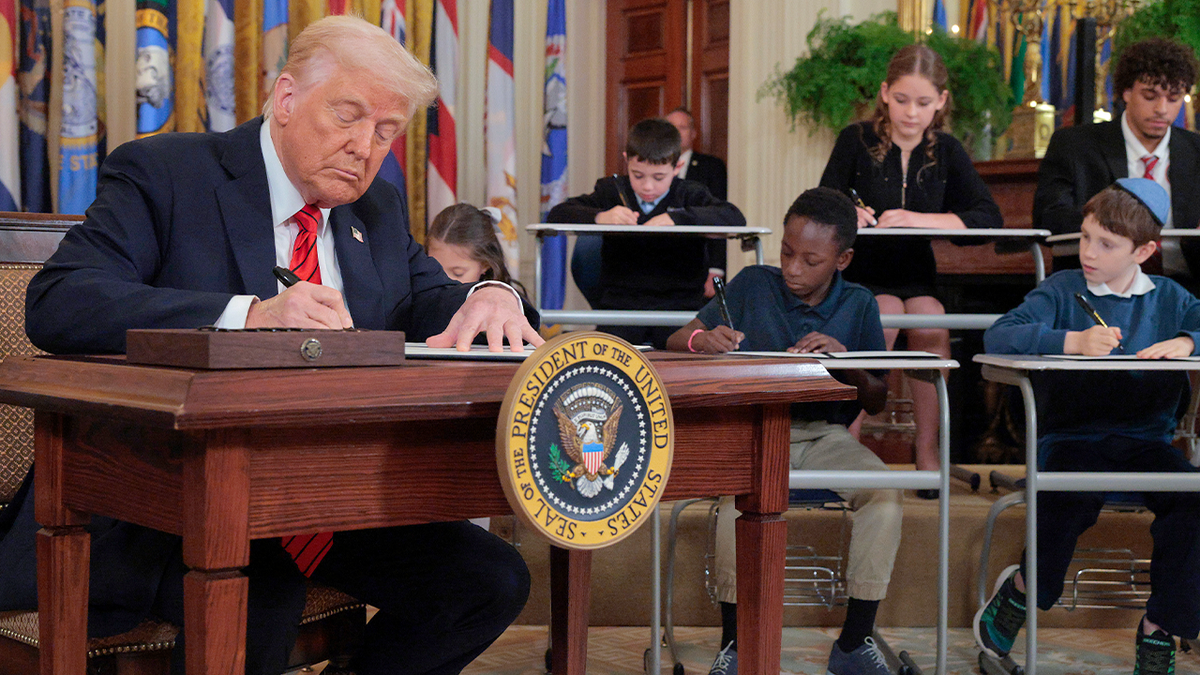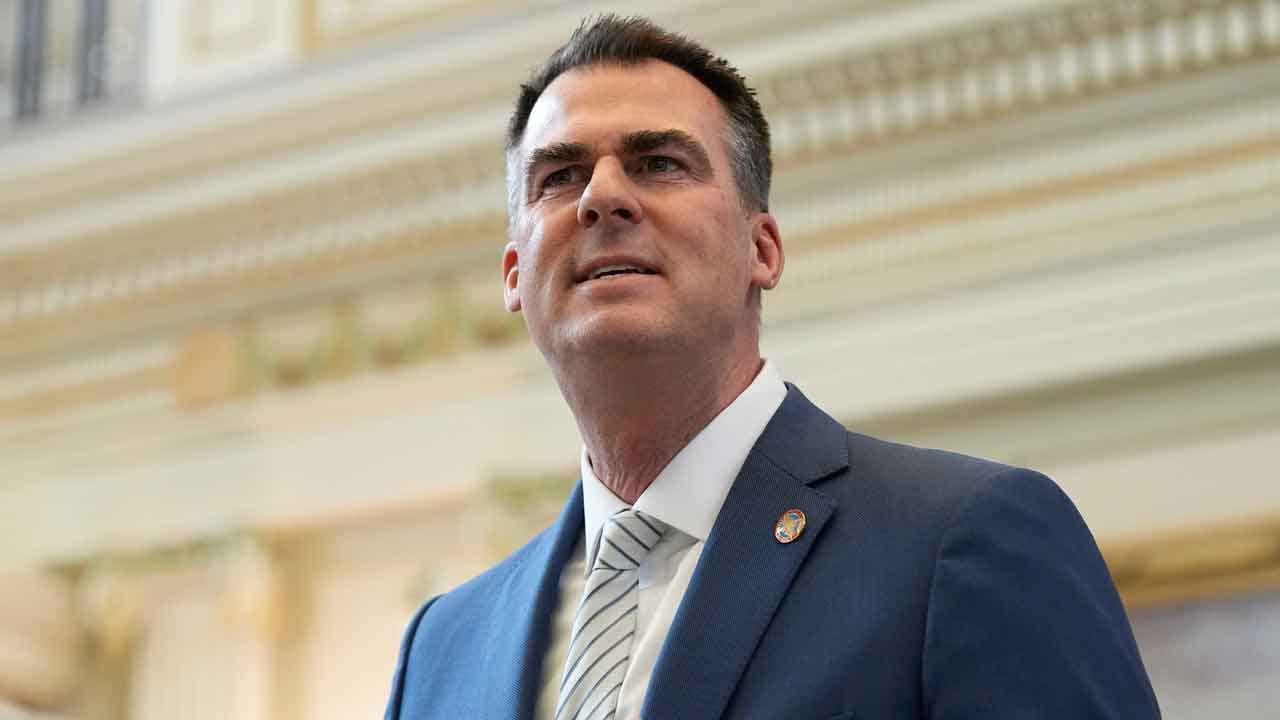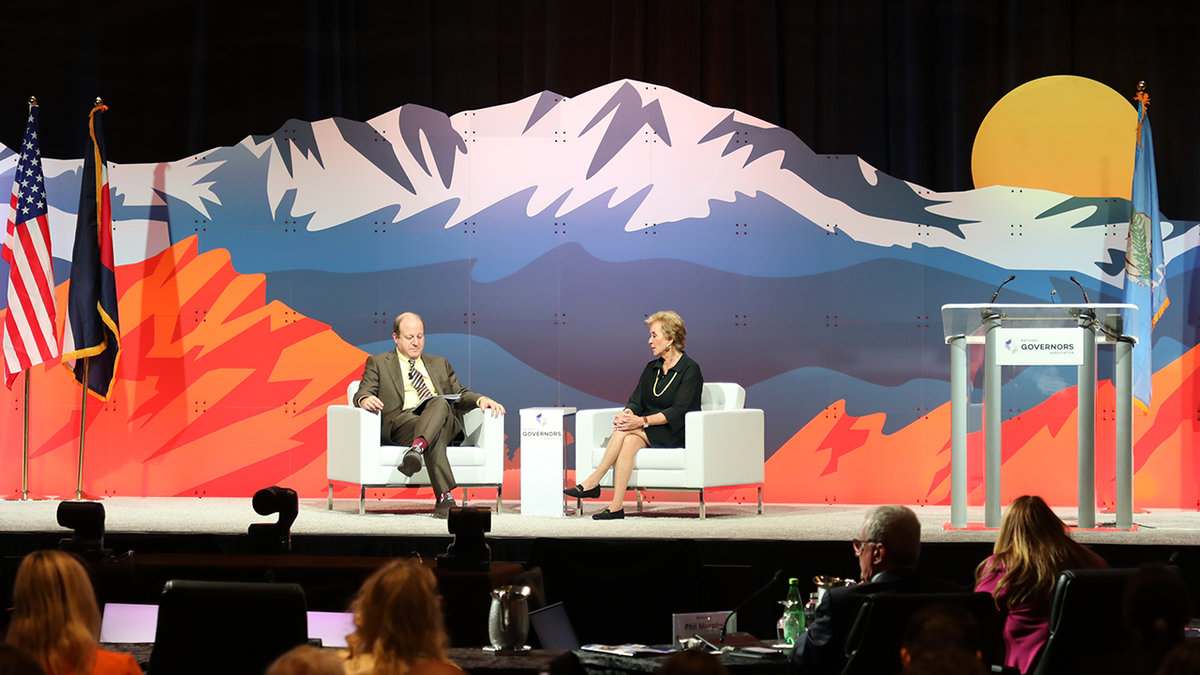INTERNACIONAL
Underperforming DC schools’ staff has grown 7 times faster than enrollment: audit

An audit of D.C. Public Schools (DCPS) found staffing levels in the district have increased at a rate of seven-and-a-half times more than student enrollment, while simultaneously student achievement levels in the district still remain behind pre-pandemic levels for most students.
The Office of the District of Columbia Auditor found that over a five-year period, while student enrollment grew by 2.6%, the number of staff increased by 19.5%. This amounts to roughly 1,600 new positions funded by the district since Fiscal Year 2020, and an approximately 43% increase in per-pupil spending.
Meanwhile, both in D.C. and nationally, students are still trying to find their way back to pre-pandemic achievement levels.
EDUCATORS HOPE ‘ABYSMAL’ NATIONAL LITERACY RATES WILL BE ADDRESSED NOW THAT DEI, GENDER IDEOLOGY OUT THE DOOR
«DC Public Schools works every day to help all our scholars reach their full potential. This recent report highlights a staffing strategy that prioritizes teachers and led to increases in enrollment and academic performance that stands out from other urban school districts. DCPS will work with the Office of the Chief Financial Officer to identify ways to improve data systems to demonstrate the district’s continued fiscal stewardship,» DCPS press secretary Evan Lambert told Fox News Digital in response to the audit’s findings. «Following the sunset of federal pandemic relief, DCPS has increased local funding to schools by decreasing the overall number of Central Services staff.»
The United States is the third-greatest spender among the 40 other developed nations in the Organization for Economic Cooperation and Development on per-pupil spending, according to the Education Data Initiative. (iStock)
The most recent National Assessment of Educational Progress, known colloquially as the nation’s report card, showed some improvements since the assessment was last released in 2022, but student achievement levels in reading and math nationally remain below 2019 levels for most students. In D.C. specifically, students saw better improvement than most big urban districts, but students in the nation’s capital have still not yet fully returned to pre-pandemic achievement levels, per the nation’s report card.
The United States is the third-biggest spender among the 40 other developed nations in the Organization for Economic Cooperation and Development on per-pupil spending, according to the Education Data Initiative. The pandemic spurred a massive influx of cash into the public school system as well, but many districts were found to be putting all that extra funding toward staff salaries and bonuses, as opposed to things directly related to student achievement.
A FAILING NATION’S REPORT CARD PROVES NEED FOR SWEEPING CHANGE
In North Carolina, the Wake County Public School System spent 78% of its total pandemic relief funding on salaries and employee benefits. In Chicago’s public schools system 77% of the district’s pandemic money went to staff bonuses, salaries and benefits.

Nationally, according to research from nonprofit education news group The 74, public schools nationally added approximately 121,000 employees last year, even though they served about 110,000 fewer students. (Adobe Stock)
«Thanks to an infusion of $190 billion in federal relief funds, schools have been on a hiring spree over the last few years,» stated an analysis by nonprofit education news group The 74. «For example, before the pandemic, Los Angeles Unified was reducing its teacher count pretty much in line with its declining enrollment. But with the infusion of federal (and state) funds, Los Angeles kept staffing levels constant despite further enrollment declines. Gwinnett County in Georgia shows a similar bifurcated trend. Its staffing and enrollment lines were moving in tandem until the federal funds drove a rapid increase in hiring.»
The 74, which stands for the 74 million American school children enrolled in K-12 schools across America, examined staffing and enrollment levels in over 9,500 school districts across the country, comprising roughly 92% of all K-12 students nationwide.
The nonprofit education newsgroup found that almost 3,000 districts saw staff levels increase despite enrollment declines. Others, according to the analysis, shrunk their staff counts, but not as quickly as they lost students, while another category included districts that gained students but increased their staffing levels even faster. According to The 74, public schools overall added approximately 121,000 employees last year overall, even though they served about 110,000 fewer students.
RANDI WEINGARTEN: TRUMP’S DECISION TO GUT THE EDUCATION DEPARTMENT IS NOT ONLY ILLEGAL, IT’S WRONG

U.S. President Donald Trump signs an executive order to reduce the size and scope of the Education Department alongside school children signing their own versions, during a ceremony in the East Room of the White House on March 20, 2025 in Washington, DC. (Chip Somodevilla/Getty Images)
President Donald Trump and Republicans have taken steps to put greater control over school funding in the hands of individual states, as opposed to the federal government. Last month, he signed an executive order meant to effectively dismantle the U.S. Department of Education through transferring its educational authority to the states. Last week, GOP senators also introduced a bill to close the department.
CLICK HERE TO GET THE FOX NEWS APP
«Despite per-pupil spending having increased by more than 245% [since the 1970s,] there has been virtually no measurable improvement in student achievement,» Trump’s March 20 order stated. «President Donald J. Trump and his administration believe we can, and must, be better.»
US Education,Politics,Dept of Education,High School
INTERNACIONAL
Donald Trump intenta frenar otra guerra: habló con los líderes de Tailandia y Camboya y dijo que negociarán un alto el fuego

Al menos 33 muertos y evacuaciones masivas
Condiciones para una tregua
Una disputa de décadas
Donald Trump,Camboya,Tailandia
INTERNACIONAL
Incoming NGA Chair ‘disappointed’ in Dem governors ‘playing politics’ in bipartisan group

NEWYou can now listen to Fox News articles!
Colorado Springs, Colo. – Incoming chair of the National Governors Association (NGA), Gov. Kevin Stitt, R-Okla., is «disappointed» that some Democratic governors might stop paying their dues to the bipartisan group.
The Atlantic reported ahead of the NGA’s summer meeting in Colorado Springs, Colo., that at least two Democrats, Govs. Tim Walz of Minnesota and Laura Kelly of Kansas, plan to stop paying their dues when asked to renew their membership this month over the NGA’s response to President Donald Trump’s second term.
«We shouldn’t be playing politics like they do in Washington, D.C.,» Stitt told Fox News Digital in an exclusive interview at the summer meeting. «But sometimes, if you’re a governor running for president or a higher office, you make it political.»
Kelly is chair of the Democratic Governors Association (DGA), the partisan gubernatorial arm that has been vocal in resisting the Trump administration. As Walz weighs a third gubernatorial run, the former vice presidential candidate has remained a leading critic of Trump’s administration since losing the White House alongside Vice President Kamala Harris last year.
TIM WALZ LEADING DEM EFFORT TO TURN BIPARTISAN GROUP AGAINST PRESIDENT TRUMP: REPORT
Incoming National Governors Association (NGA) chair Gov. Kevin Stitt spoke to Fox News Digital during the NGA summer meeting in Colorado Springs, Colo. (Deirdre Heavey/Fox News Digital)
The Democratic discontent comes as Democratic Gov. Jared Polis of Colorado prepares to cede his chairmanship to Stitt, a Republican, at this weekend’s summer meeting. Gov. Wes Moore, D-Md., is set to become vice chair.
DEMOCRATS FORGE STRANGE BEDFELLOWS AS PARTY FLOUNDERS IN TRUMP’S 2ND TERM
«I would tell anybody, listen, do you want your leaders to take their ball and go home just because they get mad at something? That’s not the way to solve problems,» Stitt said, adding that he likes both Walz and Kelly.
«Listen, this isn’t the time to take our ball and go home. Let’s sit down and debate what the best policies [are] going forward,» Stitt added.
The Oklahoma governor said it can be «frustrating» when Democrats are constantly targeting Trump, but as a business leader, he said there are plenty of instances in which governors can find common ground, including a reduction of the United States’ more than $36 trillion in debt.

National Governors Association (NGA) outgoing chair Gov. Jared Polis discusses American education with Education Secretary Linda McMahon at the NGA Summer meeting in Colorado Springs, Colo., on Friday, July 25, 2025. (Deirdre Heavey – Fox News Digital)
Ahead of the summer meeting, Eric Wohlschlegel, NGA communications director, emphasized the bipartisan nature of the NGA and told Fox News Digital the NGA’s «mission hasn’t changed.»
According to The Atlantic report, Democratic members of the NGA complained the group «did not respond forcefully enough» when the Trump administration paused federal funding early this year, as Gov. Janet Mills of Maine clashed with Trump over biological men playing in women’s sports and, more recently, when Trump authorized the National Guard to California to amid the anti-ICE protests.
«Every public statement NGA issues reflects bipartisan consensus. So far this year, all but one statement has had that consensus, and when governors don’t agree, we simply don’t issue one. That’s how we preserve our role as a bipartisan convener, a principle we won’t compromise,» Wohlschlegel explained.
Thirteen Republican and seven Democratic leaders planned to attend the summer meeting, featuring discussions with Education Secretary Linda McMahon and Health and Human Services Secretary Robert F. Kennedy Jr.

Oklahoma Gov. Kevin Stitt, vice chair of the NGA, speaks as chair Gov. Jared Polis of Colorado listens at the National Governors Association (NGA) winter meeting in Washington, D.C. (Fox News/Charlie Creitz)
A source familiar with the situation blamed the controversy on «Democratic infighting, unspoken campaign jockeying and a few anonymous voices looking to reshape a nonpartisan institution into a political one.»
The source added that «no governors are on the record expressing discontent with the NGA. No allegations of misconduct, governance failure or mismanagement have been raised.»
And without addressing the controversy directly, Conor Cahill, a spokesperson for Polis, told Fox News Digital the governor «has been honored» to lead the NGA and to «work across the aisle with governors on education, permitting reform, standing up to federal efforts to strip away gubernatorial authority around the National Guard and elevating the priorities of states.»
He added that «during this polarizing time, bipartisan organizations are needed more than ever, and NGA must continue to demonstrate value to all governors and effectively communicate governors’ opinions on various matters with the public and the federal government.»
CLICK HERE TO GET THE FOX NEWS APP
Abegail Cave, a spokesperson for Stitt, told Fox News Digital ahead of the NGA that «people seem to forget NGA is a bipartisan organization, not a political one.»
Fox News Digital reached out to Walz and Kelly for comment but did not immediately receive a response.
INTERNACIONAL
Una muestra en Barcelona revela la infancia de Claude y Paloma Picasso junto a sus padres artistas

“No es fácil ser hija de Pablo Picasso, pero tampoco de François Gilot“, ha confesado Paloma Picasso en la presentación de la exposición Crecer entre dos artistas, con el que el Museo Picasso de Barcelona rinde homenaje a su hermano Claude.
Calificada por el director del museo y cocomisario, Emmanuel Guigon, como “sensible, emocionante y poética”, la exposición se podrá ver desde mañana viernes hasta el próximo 26 de octubre, y el público podrá seguir un viaje emotivo por la infancia de Claude y Paloma Picasso junto a sus padres, en Vallauris, en el sur de Francia, adonde se trasladaron tras la Segunda Guerra Mundial.
Impulsada por la propia Paloma Picasso, la muestra reúne cerca de un centenar de obras icónicas, y muchas de ellas inéditas como La Guenon et son petit, entre pinturas, cerámicas, juguetes y fotografías familiares, así como correspondencia, que ofrecen “una mirada íntima y excepcional a la vida familiar del artista”, remarca Guigon.

Las obras de la exposición, que ha contado con el apoyo de toda la familia Picasso, transmiten, según Guigon, “la felicidad de la vida familiar, y al mismo tiempo una vida centrada en el trabajo”, porque, como ha precisado Paloma, sus padres eran “por encima de artistas, dos trabajadores”.
Comienza la exposición con los retratos de los cuatro integrantes de la familia, convertidos en sombras chinas, pero que “también se podría interpretar como las figuras de las cerámicas griegas”, anota el director del museo barcelonés.
En una segunda sala hay retratos de la familia, algunos inéditos como un retrato de Françoise Gilot de 1946 (Mujer joven sentada), cuadros en los que se ve a los niños jugando, muchos recortes de papel convertidos en pequeños objetos para jugar, fuera un mosquetero, un autobús o un “arlequín dislocado”.
En este mismo espacio se encuentra la escultura La mona y su cría (1951) y los dibujos preparatorios, que muestran el proceso seguido por Picasso para convertir en una mona unos cochecitos que le había regalado Daniel-Henry Kahnweiler a Claude y que el artista ‘robó’ a su hijo.

“Esta escultura es la demostración de que Picasso, más que un genio, es humano, porque decir que es un genio es como si su creatividad le hubiera caído del cielo, y detrás de cada obra había mucho trabajo, como se ve en los dibujos en los que esos coches de Claude se convirtieron en una mona», ha señalado Guigon.
En el ecuador del recorrido, se pueden contemplar, por primera vez en España, algunas de las obras de Gilot, centradas en Claude y Paloma y la vida familiar en Vallauris, en la casa de La Galloise.
Se trata de una obra muy influenciada por Picasso, como se puede comprobar en óleos como Claude y Paloma jugando con una pelota (1953), Mis hijos jugando (1952), Claude a caballo sobre un juguete (1952), La lección de lectura o La mesa del jardín con Claude, éstas sin fecha.

Al final de la exposición, se exhiben algunas cerámicas picassianas con Claude como protagonista, una filmación en la que se puede ver al artista transformar un vaso en una paloma, así como la película que el propio Claude dirigió con Thierry Spitzer un año después de la muerte del malagueño, Atelier 74, que documenta el estado del taller de La Californie, prácticamente intacto desde que Picasso lo abandonó en 1961 para instalarse en Mougins.
Paloma Picasso ha destacado que “en aquel ambiente familiar no había diferencia entre las obras importantes y los juguetes que hacía Picasso“, como unas muñecas que creó con la cara de su hija, que “apenas las hizo -ha recordado- me las quitó, así es la vida”.
No ha ocultado también su satisfacción de que se pueda ver en Barcelona la obra de su madre, algo que frustró la pandemia.
Sobre la relación con dos padres artistas, Paloma Picasso ha comentado: “Mi padre vivía y compartía cosas con nosotros, ponía su vida como ejemplo, y mi madre, con un pensamiento más intelectual, expresaba su temor de que acabáramos odiando el arte, porque era el arte el que nos robaba tiempo con nuestros padres; pero vivir en un ambiente tan creativo es lo mejor para un niño”.
Ha asegurado que no tiene muchos recuerdos de sus padres juntos, pues cuando se separaron ella tenía cuatro años, pero “lo hicieron bien, porque ninguno de los dos hablaba mal del otro”.
De ambos heredó la idea de “no conformarse con lo que sabes hacer, sino ir más allá” y fue así como se acabó dedicando al diseño de joyas.
Fuente: EFE
bestof,celebrities,fashion,topics,topix,toppics,toppix

 POLITICA3 días ago
POLITICA3 días agoMáximo Kirchner declaró una fortuna de 8.300 millones de pesos: representa un 76% más que el año anterior

 POLITICA2 días ago
POLITICA2 días agoLa justicia de Santa Cruz desafío a la Corte Suprema e incluyó a Cristina Kirchner en el padrón electoral

 POLITICA3 días ago
POLITICA3 días agoQué dijo Javier Milei en la Derecha Fest: las frases más impactantes



































